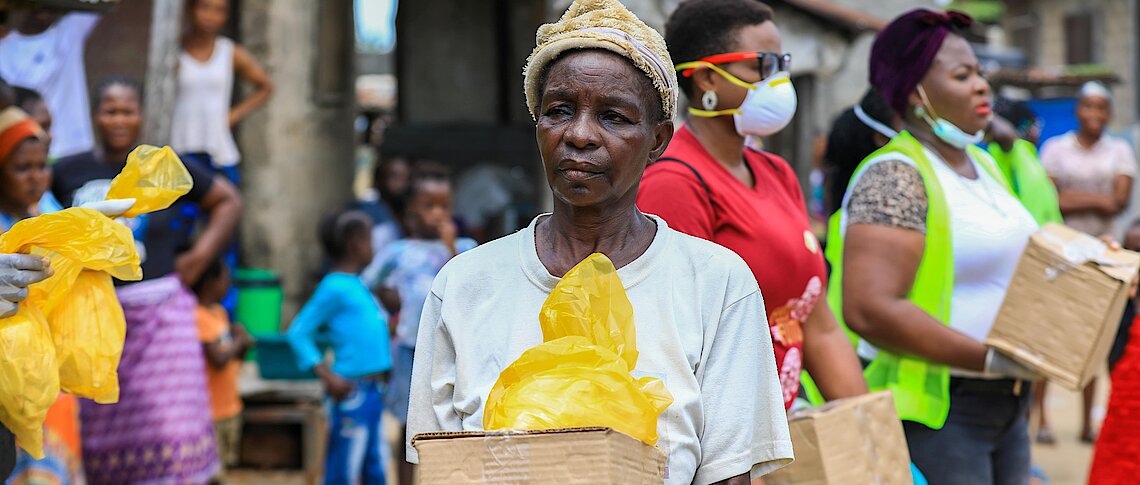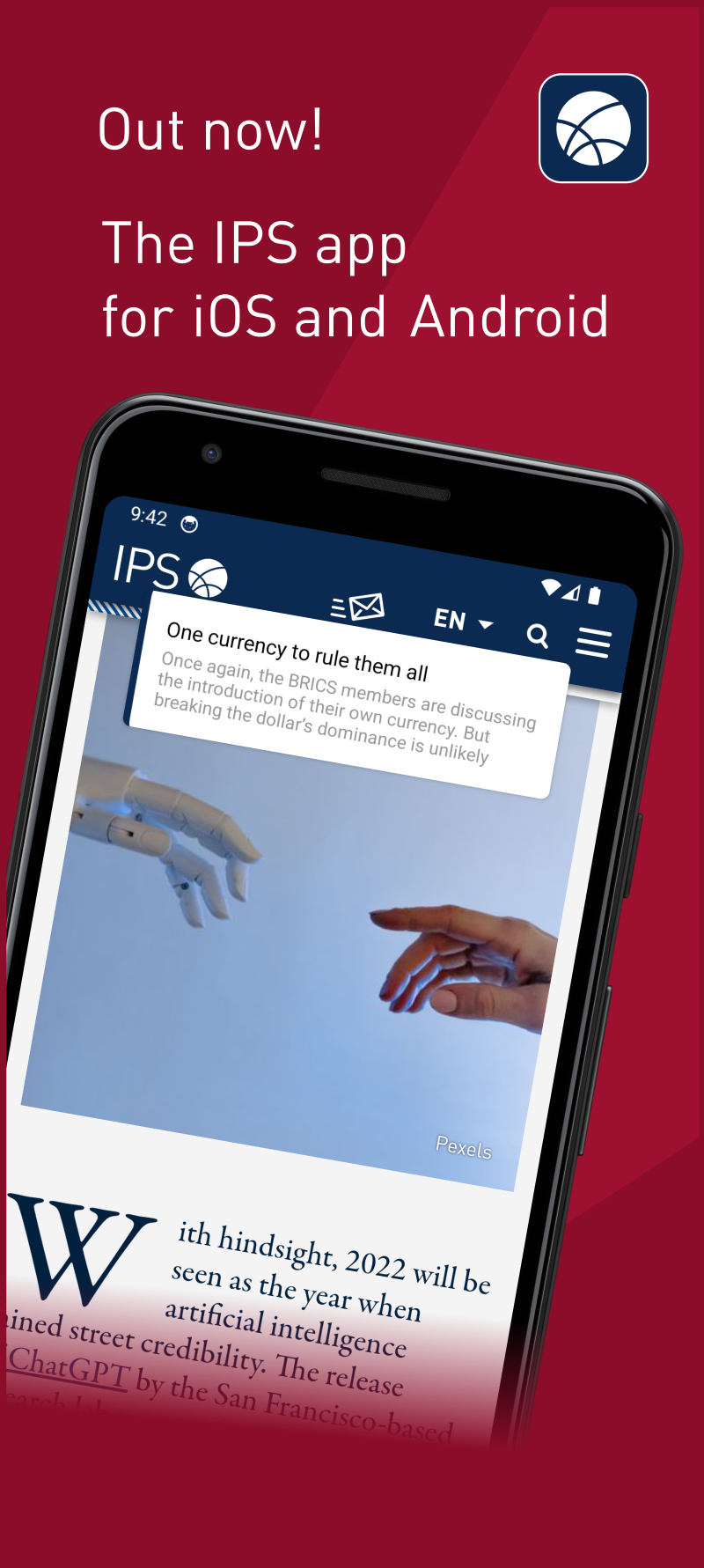Read this article in German.
The economic consequences of the coronavirus crisis have hit developing countries particularly hard. Commodity prices have collapsed, and with them, the countries’ main export revenues. Widespread mass unemployment means remittances from migrant workers have declined. Tourism is mostly a thing of the past. Large amounts of capital have flowed faster out of developing countries since the corona crisis began than during the global financial crisis of 2008. In March alone, some USD 100bn exited those countries.
Developing countries need massive financing efforts, both for coping with the pandemic and for dealing with its economic consequences. While rich countries are putting together huge rescue packages to counteract the crisis, low-income countries cannot make use of traditional policy options. Already heavily indebted and unable to levy additional taxes, their scope for manoeuvre is limited. The central banks of wealthy countries with strong currencies have introduced expansive monetary policies they liken to ‘firing a bazooka’. In developing countries, however, similar programmes would devalue their currencies and hike the cost of imports and foreign-debt servicing.
In response, the United Nations (UN) has called for a USD 2.5 trillion coronavirus crisis package for the Global South. According to the UN Conference for Trade and Development (UNCTAD), it should have three components:
First, USD 500bn for a Marshall Plan to finance the healthcare sectors of poor countries. UNCTAD thinks it’s appropriate to fund the plan through grants from rich countries that have not met their official development aid commitments over the last decade. Time to pay up.
Second, an additional USD 1 trillion in grants would be made available to developing countries through special drawing rights, the international reserve assets maintained by the International Monetary Fund (IMF). This is comparable to the European Central Bank’s liquidity injections for Europe, with the IMF acting like the Global South’s central bank.
Third, another USD 1 trillion could be released indirectly through debt cancellation. This is not about transferring money to poor countries but rather waiving future transfers from them. Debt relief would provide low-income countries fiscal leeway to rebuild their economies.
The Global South’s debt trap
The Global South is overburdened by debt. Cheap money and low interest rates in Europe and the US drew lots of investment to the South, creating unprecedented levels of debt there. Spectacular state bankruptcies like that of Argentina in 2019 portended the current crunch. Using pre-coronavirus crisis data, the IMF had already classified more than half of all low-income countries as high risks for debt crises. Then the coronavirus arrived and burst the bubble: In record time, more than 80 countries applied for emergency loans from the IMF, hence the international community and its institutions, from the IMF to the G7 and the G20, are now being pressured to grant debt relief.
On 13 April 2020, the IMF was the first international financial institution to act. It approved immediate debt service relief for 25 member countries for a period of six months. With savings of at most USD 500 million, this move is largely symbolic. It does nothing to positively impact developing countries because the IMF is expecting wealthier member states to compensate lost payments from their development aid budgets. That is, poor countries stand to lose in development aid what they gain in debt relief – although the IMF could comfortably finance debt relief by selling some of its sizeable gold reserves.
The measures adopted by the IMF and the G20 represent first steps – that are miles away from the volume of debt relief the UN considers necessary to counteract the coronavirus pandemic.
After heated negotiations between the US and China, the G20 followed suit on 15 April, agreeing on ‘a time-bound suspension of debt service payments’ for 77 of the world’s poorest countries that ‘request forbearance’. This will free up some USD 14bn that would have gone to servicing debt this year. The G20 decision grants developing countries some breathing space but not debt relief: Beneficiaries have to settle this year’s unpaid instalments over the next three years. If they can. The coronavirus pandemic is likely to bankrupt many highly indebted poor countries. Only debt cancellation can prevent that.
What’s more, the G20 rescue package comes with conditions. Countries must already be involved in an IMF programme, which generally entails ‘fiscal consolidation’, the Fund’s euphemism for austerity policy. Fulfilling IMF conditionalities has gutted many countries’ healthcare systems, making them more vulnerable to the crisis caused by the coronavirus. Bringing the IMF and its programmes into play now is like letting the fox guard the henhouse.
Developing countries need proper debt relief
Participating countries also have to renounce taking out new loans at market rates during the deferral period. Given their high debt burdens, that sounds sensible. It limits the use of countercyclical fiscal policies – reducing taxes and increasing expenditures – to stimulate their economies, however. In Germany and elsewhere in the Global North, bailouts are initially financed by new debts. Why not in the Global South as well?
Finally, the G20 deal only concerns bilateral debt, a sign that the US got its way: China is the Global South’s largest bilateral creditor by far. But in order to effectively release funds, short-term debt moratoriums and long-term debt relief also have to apply to multilateral loans, like those of the US-dominated World Bank, and especially loans from private banks and low-income countries’ government bonds. The latter are mostly held by big mutual funds based in the US and Europe. Developing countries’ foreign currency bonds have annual interest rates of up to 10 per cent – which weigh heaviest on the budgets of poor countries. Addressing that should have priority.
The measures adopted by the IMF and the G20 represent first steps – that are miles away from the volume of debt relief the UN considers necessary to counteract the coronavirus pandemic. In the coming weeks, two developments are crucial. First, payment deferrals must be changed into real debt relief. Kicking the can down the road doesn’t solve the problem. Second, private creditors must also be involved in debt restructuring. In recent years, speculators have earned oodles of money buying high-yield high-risk loans from poor countries instead of purchasing federal bonds. Now they have got to accept write-downs.
That being said, the G20 cannot dictate private debt restructuring. Its role is to provide legal and political support to low-income countries that stop servicing private debt during the corona crisis. At the moment, that is totally justifiable. The UN Human Rights Council’s guiding principles on foreign debt and human rights declare that when resources become scarce, states must prioritise human-rights-related expenses like those for education and healthcare over debt payments. No state should be allowed to trample on its citizens’ human rights in order to meet creditors’ claims, even if that means not servicing debt. During the corona crisis, many countries will be faced with this choice.






